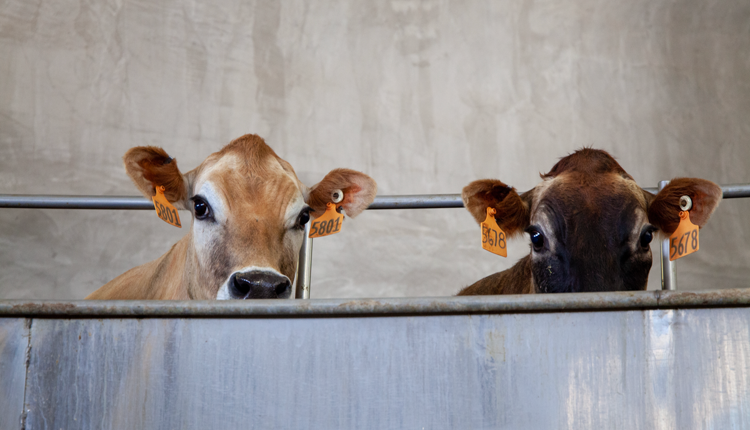The author is a professor and extension dairy specialist at the University of Idaho.

Transrectal palpation of uterine contents, ultrasonography, and chemical tests are the most common pregnancy-testing methods in cattle. Palpation and ultrasonography are most often performed by a veterinarian, while chemical tests may not require extensive training and may be suited to farms that are geographically isolated and without routine veterinary service.
Work with a lab
Lateral flow immunoassays for pregnancy diagnosis have been available in humans for many years. These assays may be performed at home, are low-cost, provide fast results, and do not require expensive equipment. They measure the presence or absence of human chorionic gonadotropin (hCG) in urine. A positive (pregnant) diagnosis can be visualized as two lines (one control line and one test line).
Commercial pregnancy-associated glycoproteins (PAG) tests, in which blood samples from cows or heifers are collected by farm personnel and forwarded to a certified laboratory, have been available for years. Pregnancy status is determined by the presence or absence of PAG, and the results are returned by email, fax, or mail. The sensitivity (correct identification of pregnant animals) of these commercial PAG tests is 98% to 99%, and the specificity (correct identification of open animals) is 96% to 99%.
Produced by the binucleate trophoblast cells of the placenta, PAG enter maternal circulation between Days 22 and 24 of gestation. They are a reliable pregnancy marker when cows are tested 28 days after A.I. and 70 days or more after calving. The function of PAG is thought to be related to adhesion between the uterus and the placenta.
There has been keen interest in the development of on-farm chemical pregnancy tests using lateral flow immunoassays in cattle. However, cattle do not produce hCG. Consequently, development of a test for cattle has focused on PAG in blood.
On-farm options
Recently, two on-farm lateral flow tests (Alertys OnFarm Pregnancy Test and Pregnostx) have been developed for the detection of PAG in the blood of cattle. Instructions are included with each kit and available on each company’s website.
The tests are performed in a similar manner. After obtaining blood from the animal, a specific amount is transferred into the sample port of the lateral flow cassette. Next, a wash solution is added to the same sample port. After 20 to 30 minutes (depending on the manufacturer’s instructions), the presence of two lines indicates pregnancy and the presence of a single line indicates nonpregnant status. The test (second) line may range from dark to very light, but the presence of color at the test position, at any intensity, is associated with pregnancy.
In a recent study, the sensitivity and specificity of the lateral flow cassette for the detection of PAG was similar to commercial PAG blood tests described previously (100% and 93%, respectively). A false positive PAG result (identified pregnant by the test, but open by ultrasound) was reported and thought to be related to early embryonic mortality.
Cattle suffering embryonic death and pregnant cattle with a healthy embryo have been reported to have similar blood PAG concentration between Days 24 and 35 of gestation. This is likely because PAG have a long half-life; high concentrations may remain in circulation even though embryonic loss has occurred, resulting in a false positive test.
The PAG lateral flow on-farm pregnancy tests offer a simple procedure yielding results within 20 to 30 minutes. Skilled personnel are needed, however, to draw blood and perform the test. There are, of course, pros and cons to any strategy. A limitation of these tests is the lack of information that can be gleaned from the use of palpation and ultrasonography (such as size and tone of the reproductive tract, ovarian structures, embryonic or fetal death). Another important consideration is the potential for reduced interaction with a veterinarian, leading to animal health and fertility issues.
Keep in mind that pregnancy examination, regardless of whether it is performed by palpation, ultrasound or a PAG test, provides critical actionable information. The timely management of open cows facilitates re-insemination and overall reproductive efficiency. Are you interested in adding an on-farm PAG test to your reproductive management? Work with your management team to discuss the possibilities. Happy A.I. breeding!











